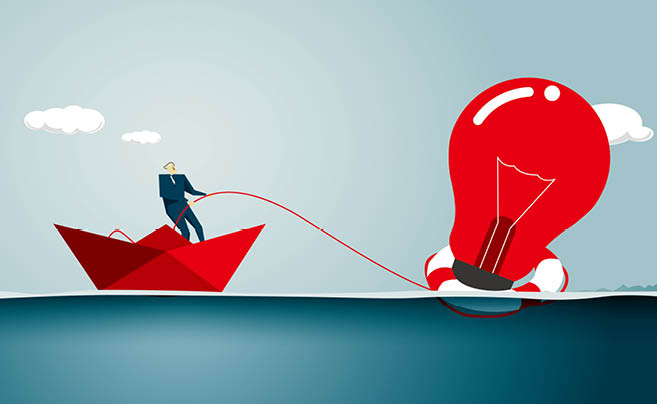Leaders cannot extend boundaries without taking chances. Innovation is largely a function of repeated mistakes and failure, coupled with learning from those experiences.
Nothing better can ever emerge unless people are willing to try something new, even if they don’t get it right the first time; which is by far the most typical outcome.
By experimenting with new and different ideas, methods and approaches, leaders become quite skilled at managing the risk of innovation.
Momentum is always critical to learning, as it is to innovation. As John Studdert, the former CEO and executive chairman of Ogilvy Public Relations in Australia, observes, “When you’re pushing boundaries you make a bunch of mistakes. But you learn quickly and move on when you can’t get an idea to gain traction. Some ideas will work, some of them won’t.” To get an idea off the ground, John says, “What you want to do is to build some momentum around it quickly through profiling success. And you want the first things that get acknowledgement to be the wins. So, going out and finding out what those successes were, and celebrating them, makes a big difference.”
Richard Hall, the Associate Dean at the University of Sydney’s Business School, applied this lesson well when the school developed and launched a new Executive MBA program; an education space the university had never entered. He explains, “We realised that our change imperative wasn’t, ‘We’ve got to be in the MBA market’ — because that market is crowded and poorly differentiated. Let’s do something different that the market wants. Let’s design and build something that responds to that.”
One of the most radical things the University of Sydney’s Business School did – which had never been done in Australia – was to integrate faculties from a variety of seemingly unrelated fields to an MBA education, such as philosophy, art and music.
The faculty stumbled a lot at the beginning of the program, as did the students, in sorting out what was happening and how they were being expected to take responsibility for integrating the lessons and learnings across the various disciplines. However, Richard and his team called every new course a ‘trial’ and viewed each one as an opportunity to learn. The program’s eventual success was due to its ability to build upon these trial experiences as a series of small wins. The methodology, he explains, was, “…trialling things wherever possible in bite‐size chunks, on a small scale. Failing often and failing fast. Being prepared to be as agile as we could and changing things as needed.”
Richard’s experience illustrates that learning doesn’t typically happen overnight; rather, it’s a step‐by‐step experimentation process. Leaders need to break projects, dreams and aspirations down into smaller pieces so that people can experience making progress.
How do leaders create massive shifts and catalyse enormous change?
One step at a time. Generating small wins gives permission to carry out tests and generates credibility to continue to move beyond the status quo and to learn from experimentation.
As paradoxical as it may sound, leaders make risk safe. They don’t define boldness solely in terms of go‐for‐broke, giant‐leap projects. More often than not, they see change as starting small, using pilot projects – for instance model sites, demonstration studies, laboratory tests, field experiments, market trials – and gaining momentum. A great leader tries lots of little things in the service of something much bigger. While their overarching vision may be grand and distant, the way they reach it is by putting one foot in front of the other. These small, visible steps are likely to win early victories and gain early supporters.







